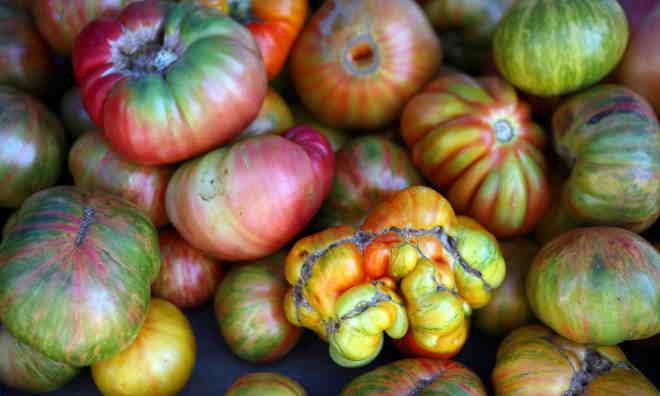How much food is wasted because it looks just a little “wonky”?
Produce that is misshapen but completely edible is frequently rejected by supermarkets because it doesn’t meet their standards of appearance, which results in wasted food and lost income for farmers.
British activist and author Tristram Stuart has drawn attention to what he calls “the global food waste scandal,” which includes supermarkets’ rejection of unattractive produce. According to Stuart, “An estimated 20 to 40 percent of United Kingdom fruits and vegetables [are] rejected even before they reach the shops – mostly because they don’t not match the supermarkets’ excessively strict cosmetic standards.”
Fortunately, Stuart’s activism has produced some results. Sainsbury’s, a British supermarket chain, announced last year that it would be accepting more aesthetically imperfect vegetables in response to food shortages brought on by 2012’s poor weather conditions. While this move was encouraging, it was temporary. More permanent changes are needed to address the food waste crisis.
In February, Stuart helped to host a dinner with the governing council of the U.N.Environment Programme (UNEP) in Nairobi, Kenya, during which he carried out a food waste demonstration. At this event, high-ranking UNEP officials dined on a meal made entirely of produce that was grown in Kenya for export, but rejected by foreign buyers for, as Stuart says, “cosmetic reasons.”
As Al Jazeera reported in covering the event, at least 10 to 15 percent of Kenyan produce is rejected by supermarket buyers, and this rejected food rarely ends up being consumed by humans. In fact, some supermarkets have rules mandating that rejected produce go only to animals, and not to people. This is especially outrageous because, according to the World Health Organization, 30 percent of Kenya’s population gets below the minimum level of dietary energy consumption.
As the Natural Resources Defense Council (NRDC) reports, “Food waste is a complex problem, with losses occurring throughout the food chain, from ‘farm to fork.’” But Stuart has demonstrated, convincing supermarkets to change their aesthetic standards for otherwise good produce is one necessary step towards reducing food waste. Meanwhile, consumers who want to do their part can reduce food waste with these tips from the Natural Resources Defense Council.












